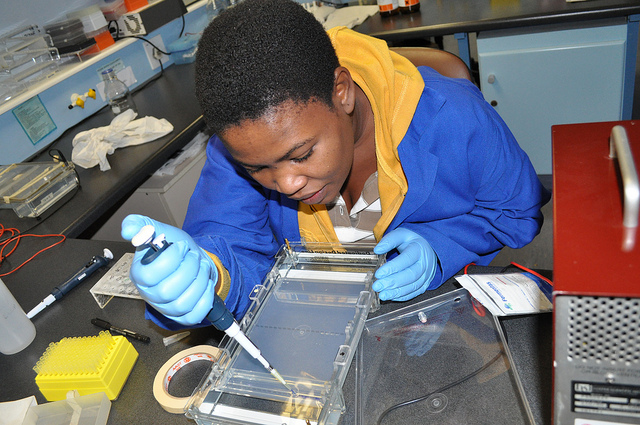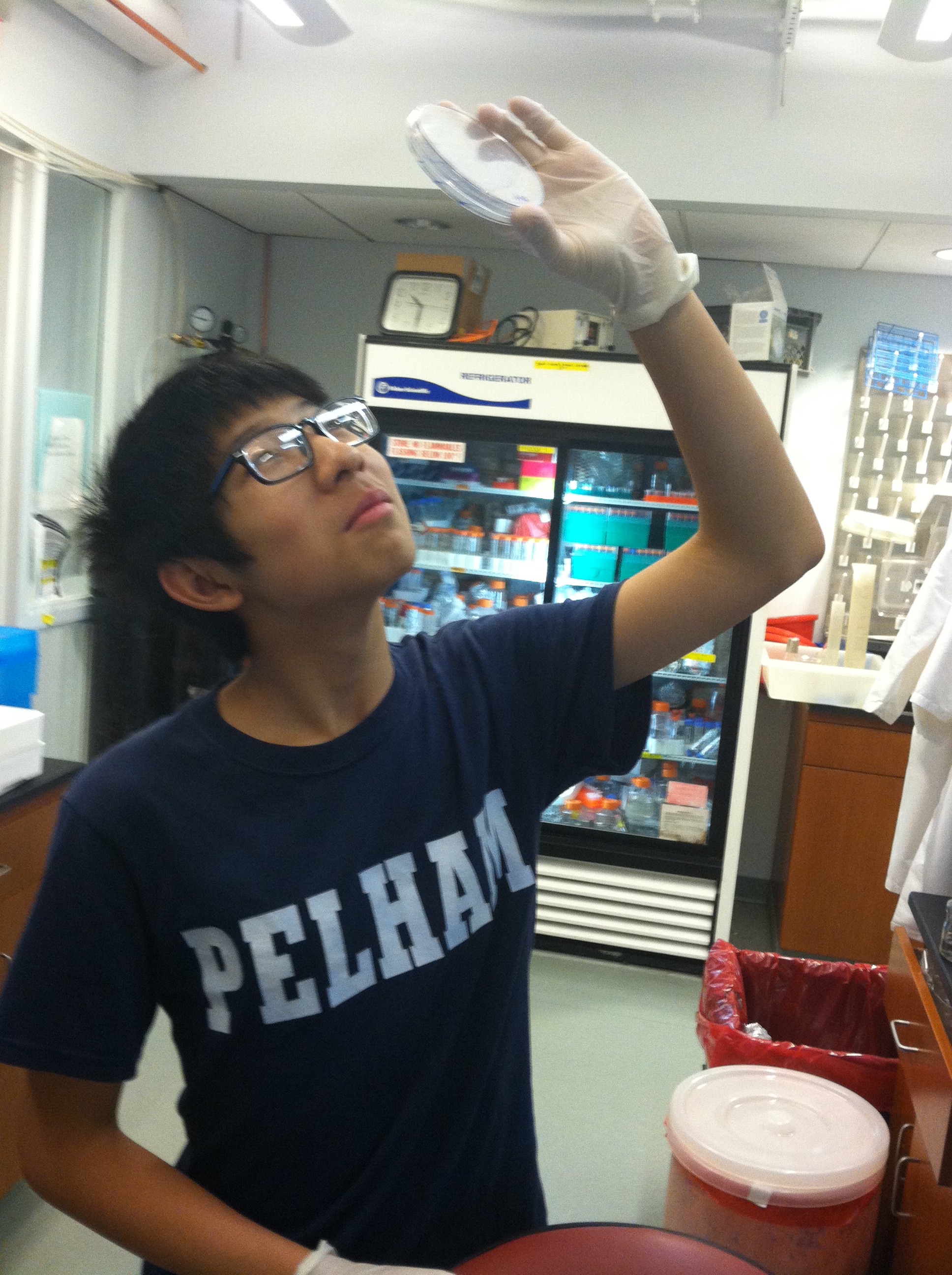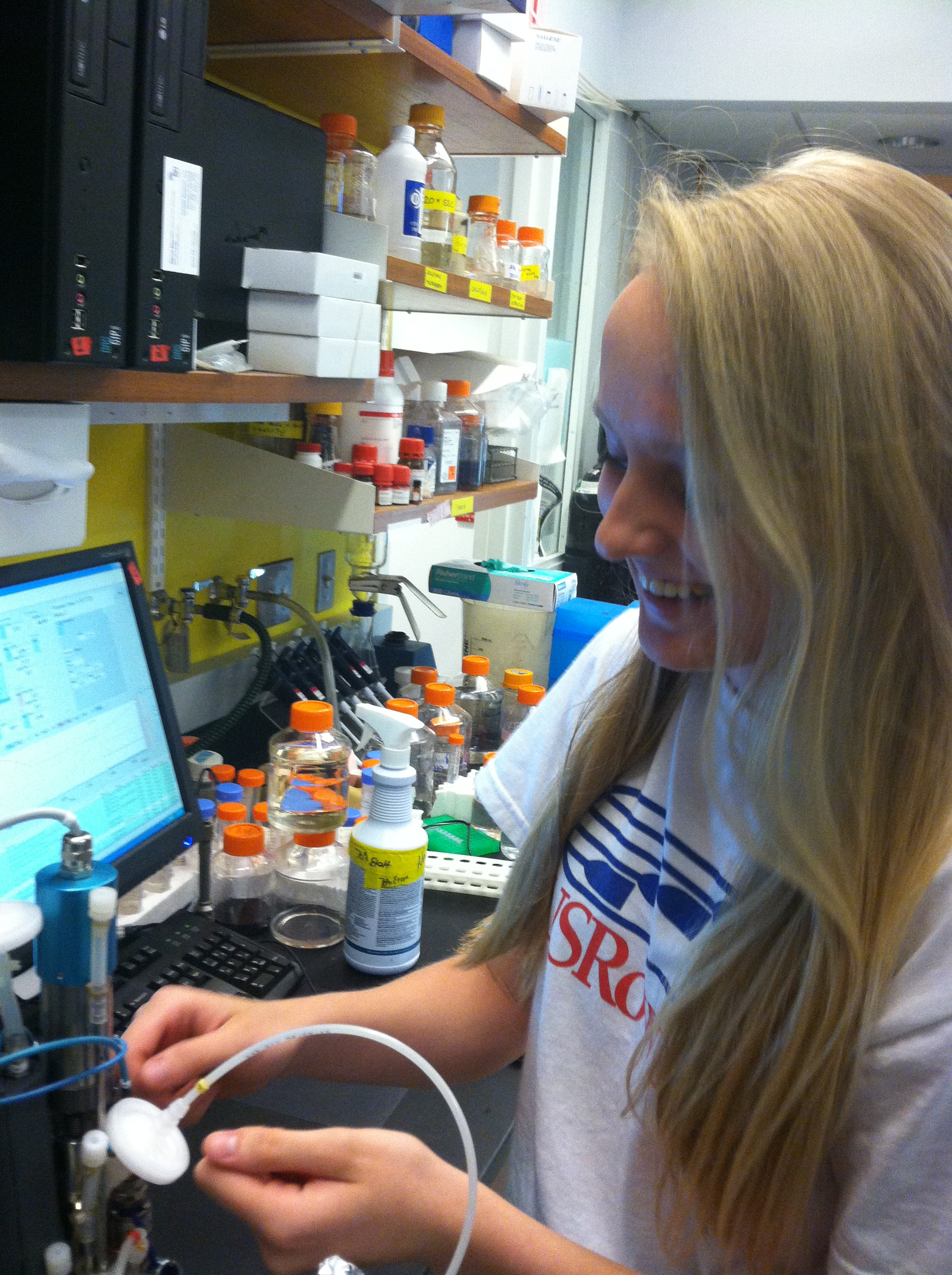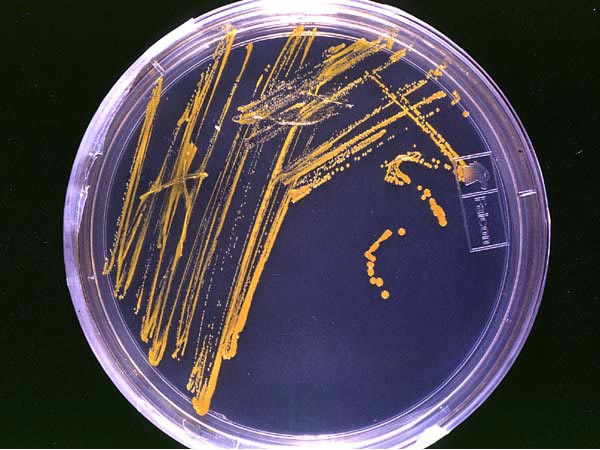Phage Phinders 2017
Back Row (Left to Right): Bill Jacobs (Lab Director), Connor DeJager, Torin Weisbrod (Lab Manager, Mentor), Dankwa Amoah
Front Row (Left to Right): Annie Dai (Mentor), Jacqueline Copland, Chinmayi Venkatram, Marie Mazzeo (SURP Student), Valerie Schfiano, Yunia Alvarez
High School phage phinders 2013



Julia Kavanaugh, Pelham Memorial High School Mentor: Dr. Michael Berney
As an extension of the work I did last year, I am doing a microarray on the difference between wild-type M. smegmatis and M. smegmatis with an addition of Methylglyoxal (MG). i am studying the differce between Smeg metabolism with MG at different points in its life cycle/ growth curve. Hopefully this will lead to information on the different proteins/pathways of m. Smegmatis when it has come in contact with an excess amount of MG.
Zhun Che, Pelham Memorial High School Mentor: Dr. Michael Berney
Methylglyoxal is a toxic metabolite that is created within all bacteria as a defensive mechanism against carbon metabolic imbalance. If we can take advantage of this natural process, we can create a therapeutic agent against tuberculosis. However, we first have to understand the metabolism of methylglyoxal, which I am doing through transposons and suppresor mutants. I have a transposon library and have isolated 15 suppressor mutants.
Libby Ho, Stuyvesant High School Mentor: Oren Mayer
I'm working with the TMP gene, which codes for the tape measure protein in phages. In this gene, there are these specific motifs that resemble other gene sequences in TB, which resuscitate the bacteria, essentially bringing them out of dormant state. This is really interesting, because oftentimes in hospital drug treatments for TB, there is always this 0.01% or so of the TB that is phenotypically resistant to the drugs, because they are dormant, so they can resist the stresses (drugs and phages) administered to them. So what I want to do is insert this gene into TB, forcing all of the bacteria to become active, so that that 0.01% of phenotypically resistant TB will be eliminated. If this works out, and the death curve I'll be creating over the summer works, then it might really help make drugs and phage therapy much more effective in hospital treatments
Diana Ordonez , Lincoln High School Mentor: Dr. Adel Malek
My work currently focuses on using genetic manipulation tools to develop mutations in M. tuberculosis by using temperature sensitive conditionally replicating transducing mycobacteriophages. We are targeting ABC transporters as a means to develop multiple non-revertible mutations in TB as possible candidates for a live attenuated vaccine for tuberculosis.
Lisette Garcia, Lincoln High School Mentor: Dr. Paras Jain
Our projects consists creating Herpes Simplex Virus mutants. We will create mutants of then surface glycoproteins found within the envelop of the the Herpes Virus to get a better understanding of them and how they function. The mutants will be tested on dentritic cells, which are immune cells which cannot function properly after infection of the virus. The mutants will give us pathway to also finding a possible vaccine for Herpes.
Karen Giraldo, Mentor: Dr. Sangeeta Tiwari
Killing Mycobacteria by Starving: Auxotrophs as Novel Vaccine Candidates to Eradicate Tuberculosis


